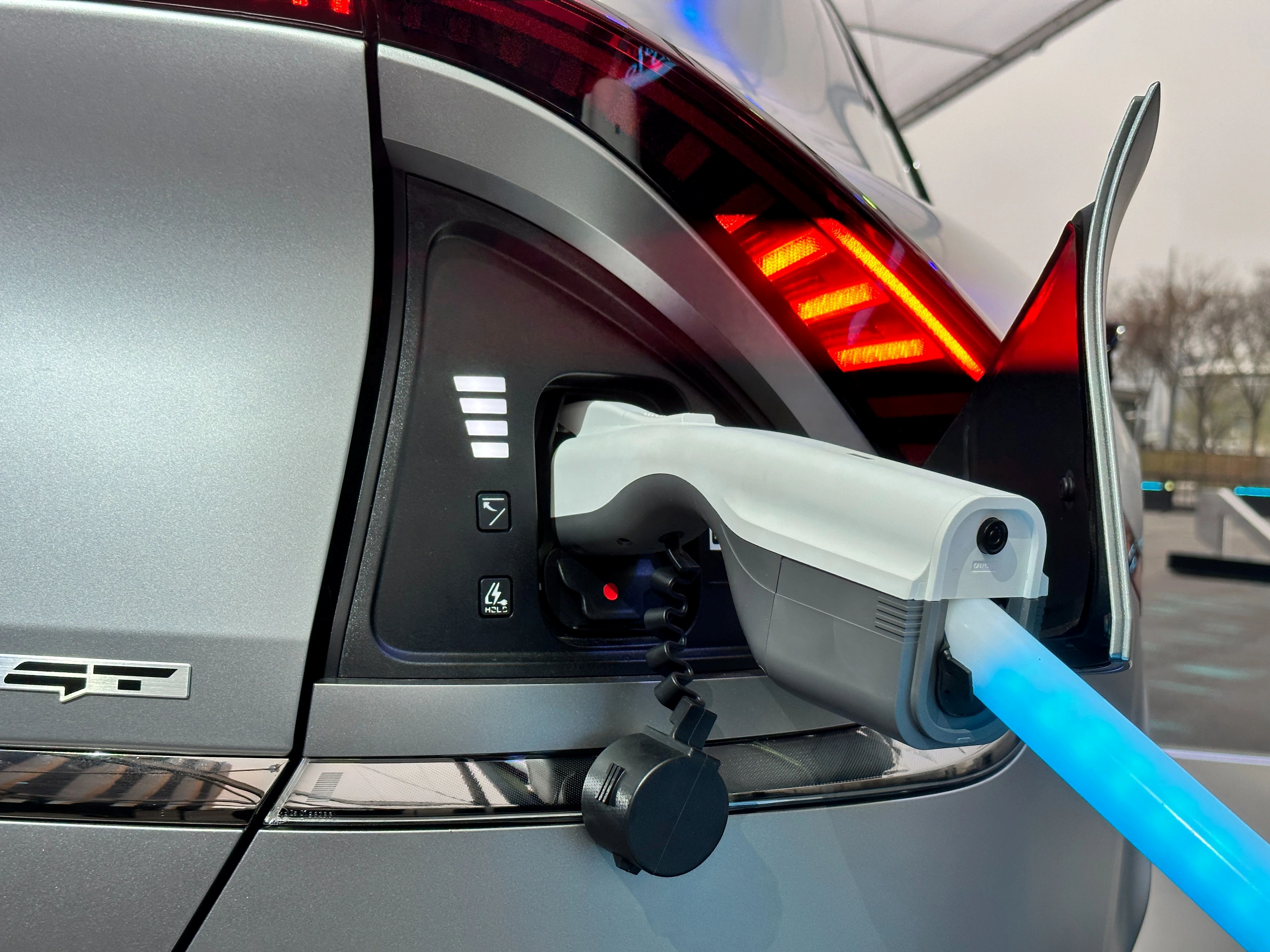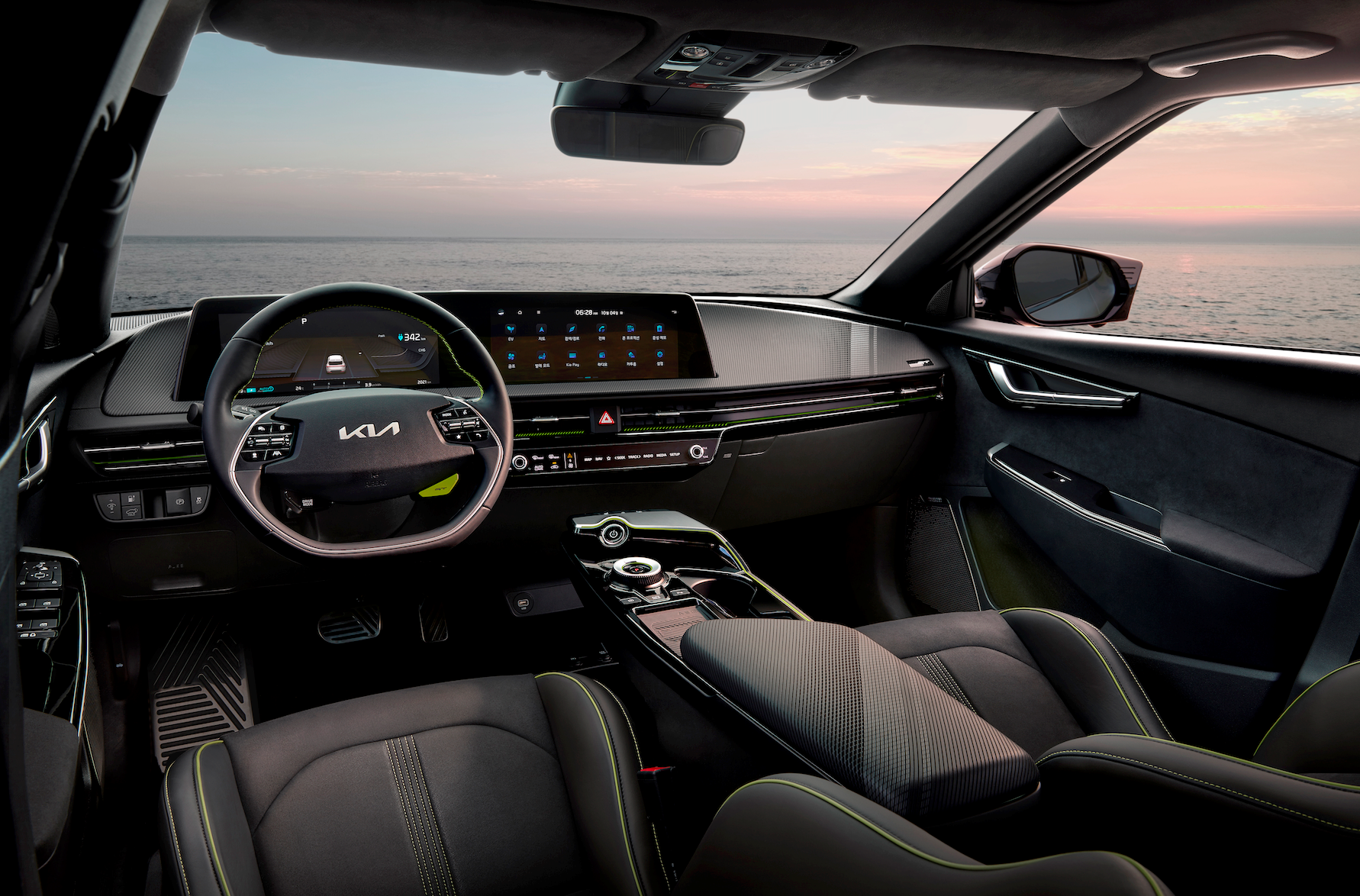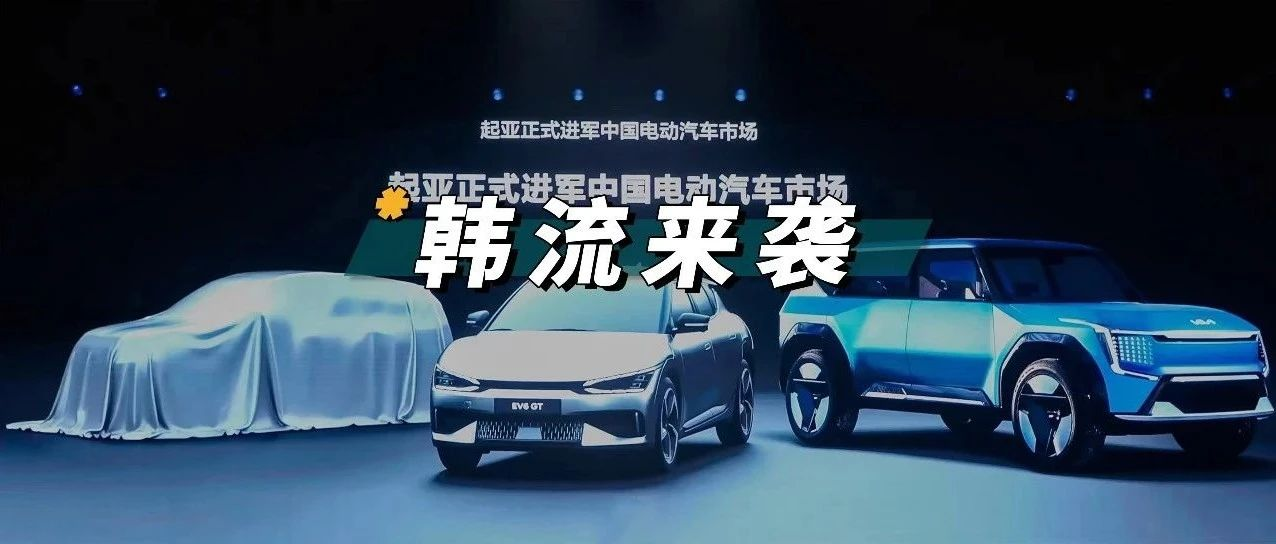Author: Xiao Dong
Editor: Chris
On March 20th, Kia China’s new energy strategy conference was officially held, and Kia finally brought electric vehicles to the domestic market. Of course, the pure electric version of K3 is another story.
Kia global CEO, Song Ho-sung, personally attended the conference, and it can be seen that the domestic market is still very attractive to Kia. A total of three models were displayed at the conference, including the production version of EV6, and the concept versions of EV5 and EV9. Among them, the EV5 concept version made its global debut, full of sincerity.
However, Kia’s brand power in China has really weakened in recent years. In 2016, Kia’s sales in China reached 650,000 units, but in the following six years, the sales plummeted, with Kia’s total annual sales in China in 2022 being less than 100,000 units.
The promotion of electrification in China is also very poor, and the first time I noticed Kia’s EV6 was in 2021 when European and American users gave this car a good review. Unfortunately, domestic users will have to wait until August 2023 to buy this product, which is a bit late.
Although coming late, the three models based on the E-GMP pure electric architecture are not weak in product power.
E-GMP
In the next few years, Korean pure electric vehicle models will be closely related to the four letters E-GMP.
With the E-GMP architecture, the Hyundai Group launched IONIQ 5 and Genesis GV60 in 2021, and the three models have achieved considerable sales overseas. Next, the E-GMP architecture will also be the mainstay, and Kia’s EV5, EV9, and Hyundai’s IQNIQ 6, 7 will all be derived from this architecture. According to the Hyundai Group’s plan, this platform will launch 23 models of pure electric vehicles.“`

Taking Kia as an example, it plans to launch 6 pure electric vehicle models based on the E-GMP architecture in the domestic market before 2027, and Hyundai and Genesis will also launch multiple models. Therefore, let’s take a closer look at E-GMP.
The most important thing is that the E-GMP architecture has a native 800V high-voltage platform. This means that the charging efficiency will be greatly improved. The peak power given by Kia official in the domestic market is not referenceable, after all, there are too few third-party charging piles that can break through 250A current in the domestic market. Therefore, the peak power of 800V models in the domestic market on third-party charging piles will not exceed 180 kW. In reality, it is rare for the peak charging power to exceed 150 kW.

The power is very high during trickle charging on the 800V platform. We found that there is still more than 50 kW of charging power when the SoC shows a remaining battery capacity of more than 95% during the test of XPeng G9’s charging power. Compared with the 400V platform, the charging efficiency throughout the entire process has been greatly improved.
Of course, there is a small issue when Korean pure electric vehicle models enter the domestic market. How is the adaptability of domestic charging piles? After all, the ownership of the pure electric version K3 is small, and the Genesis GV60 has just entered the domestic market. Regarding the adaptability issue, it is still unknown.
The E-GMP architecture is also equipped with a 3.6 kW external power output function, which can meet basic outdoor power needs without any problems. Of course, under the cruel competition in the domestic market, the external power output of many vehicle models has been increased to 6.6 kW.

“`When it comes to 800V, it’s hard not to mention SiC. Although the two are not strongly bound, the effect of “1+1>2” is evident. E-GMP architecture uses SiC modules to increase range by 5%, and this improvement in efficiency leads to a decrease in the battery capacity needed for the same range. This cost-saving ability is highly attractive to car manufacturers. For models that pursue range, it is also an efficient solution.
As for the power battery, South Korea has always been among the global leaders. Looking at the global installation of power batteries in January 2023, although giants such as CATL and BYD are growing rapidly, LG, Samsung, and SK are still able to capture 23.2% of the global market share.
As for the three-electric system, if the 3.5-second acceleration to 100 km/h of the Kia EV6 GT is not impressive enough, its top speed of 260 km/h is enough to prove the excellence of this system. A top speed of 260 km/h also means that the Kia EV6 GT is equipped with a motor that spins at 21,000 rpm, which is still rare in pure electric vehicles.
Limiting the top speed of an electric vehicle involves the ability of the motor, the power of the battery discharge, the ability of heat dissipation, and the ability of the electronic control system, among others. Among them, the ability of thermal management is extremely important. Both the battery and the permanent magnet motor require a powerful thermal management system to maintain stability. There is an interesting metric in China’s Ministry of Industry and Information Technology data called “continuous 30-minute highest vehicle speed”, which is worth looking up.
As for the characteristics brought by the pure electric platform, such as the four-wheel corner design, higher space utilization rate, flat platform, etc., they are not repeated here. In summary, E-GMP, as one of the earliest 800V pure electric architectures in the world, was impressive when it was first exposed in 2017. E-GMP’s scalability can also support Hyundai Motor Group’s research and development from compact cars to large SUVs with a wheelbase of more than 3 meters.
 Looking at it today, E-GMP is still an excellent pure electric architecture.
Looking at it today, E-GMP is still an excellent pure electric architecture.
569
Following the order of time, let’s take a look at the Kia EV6. Kia’s naming for electric vehicles is quite straightforward, using “EV” to represent electric and numbers to represent the model. As early as March 2021, the Kia EV6 had already made its debut. For the global market, the Kia EV6 is not a new car. In the domestic market, Kia EV6 will only be available in the GT-Line and GT versions in August of this year, and the regular version will not be available.
Both the GT-Line and GT versions are four-wheel drive models, with a slight difference in power. The GT-Line’s dual-motor peak power is 235 kW, while the GT model’s peak power can reach 430 kW and maximum torque of 740 N·m. The acceleration from 0 to 100 km/h can be achieved in 3.5 seconds, and the top speed is 260 km/h. I experienced it on-site, and the instant violent outbreak of over 700 N·m of torque is extremely impressive.

As for the appearance, I really like it. The styling of the front face is not complicated. The Kia EV6’s headlights remind me of the XPeng P5. In comparison, the former does a better job of creating a sporty feeling. The low center of gravity, short front overhang, and long wheelbase design, coupled with the 21-inch wheels of the GT model, make the overall body posture very smooth. The tires use Michelin’s PS4S tires, with a low profile ratio of only 40. The brake calipers are fluorescent, catching many eyes.

Unfortunately, the time to experience the interior of the car this time was only a few minutes, and the details of the interior can only be discussed next time during a static experience.
 Both models use a 77.4 kWh battery for the driving range. The domestic CLTC driving range has not yet been announced. Let’s take a look at the data given by the EPA. The GT-Line model has a driving range of 405 km with 20-inch wheels, while the GT model has a driving range of 331 km with 21-inch wheels. The EPA data is basically similar to our daily driving data. However, 331 km of driving range for the GT model is still a bit difficult.
Both models use a 77.4 kWh battery for the driving range. The domestic CLTC driving range has not yet been announced. Let’s take a look at the data given by the EPA. The GT-Line model has a driving range of 405 km with 20-inch wheels, while the GT model has a driving range of 331 km with 21-inch wheels. The EPA data is basically similar to our daily driving data. However, 331 km of driving range for the GT model is still a bit difficult.
Next up is the Kia EV9, but it’s just a concept. There has been some news about the mass-produced version of the Kia EV9 in overseas markets, so let’s take a look at the mass-produced version of the Kia EV9.

Compared with the concept version, the mass-produced version of the Kia EV9 has dropped to a new level of science fiction, but the overall design style of the shape has been retained. The square shape of the Kia EV9 still makes me feel that it will be a disaster in terms of driving range. Fortunately, the long-range version of the EV9 is expected to be equipped with a 100 kWh battery, which can relieve some range anxiety.
As for the interior, there is no connection between the concept car and the mass-produced version. The screen still uses two 12.3-inch screens. The rest has returned to a normal appearance, but the physical buttons have been significantly reduced compared to the Kia models on sale. The center console screen uses virtual buttons similar to the IM L7. The seating layout is in the 2+2+2 form, and the second-row seats can “turn right” or “turn back”.


The EV9 is expected to have Level 3 autonomous driving, however, the conditions for its limitations are currently unknown. It would be pointless if it’s like the one from Mercedes that cannot be used at night, in rainy or snowy weather or at speeds exceeding 60 km/h.

With its 3100mm wheelbase, I have confidence in the EV9’s interior space. However, as a 6-seater SUV entering China in 2024, it still faces challenges from Ideal Auto. Little is known about the specific features of the production version of the EV9, but more information is expected when it is released overseas in April.

Lastly, the heavyweight product of the Kia China New Energy Strategy Conference is the Kia EV5 concept version, which also made its global debut at the conference. Its design is quite similar to the EV9, although the front grille looks a bit too aggressive. The simple lines at the rear and the through-type taillights are well done, and the whole car is still square and boxy like the EV9.

Assuming EV5 follows the EV9, the production version’s interior will be significantly different from the concept version. So it’s best to just look at the pictures as more detailed information is currently limited. The long-range version of EV5 can expect a range of over 700km (CLTC), and the dual-motor version will surely be available.

The good news is that the Kia EV5 will be launched in China this November! From EV5 onwards, Kia’s domestic pure electric market will finally catch up to the global market, giving a sense of this year’s early Marvel movies.## One More Thing
▎Kia is eyeing a slice of the largest market for new energy vehicles in the world, but it’s not an easy task.
In addition to the three models mentioned earlier, Kia will introduce an entry-level pure electric SUV in 2025, the first pure electric sedan in 2026, and a medium-sized pure electric SUV in 2027, in order to complete its product matrix layout in the domestic market.

From the perspective of transportation, Kia’s three models have a strong product strength. However, things seem to become different when facing the complex Chinese market. Based on the actual experience of the GV60 by Genesis, the conclusion about localization adaptation is “yes, but far from enough.”
At this press conference, Kia stated that it will strengthen the four major technological directions of mobile travel, electrification, interconnectivity, and autonomous driving, through China’s digital R&D center and other teams, in order to create products that better meet the needs of Chinese users.
The first step is to launch Kia’s brand APP, to build a private ecological system covering various fields, such as car purchase, use, maintenance, and services. In terms of sales channels, by integrating online and offline sales channels through “App + City Exhibition Hall + OMO,” a new brand image will be established.

It is worth mentioning that Kia plans to cooperate with domestic charging pile suppliers to build a super charging network.
Kia announced its sales target at this press conference, aiming at achieving a pure electric vehicle sales volume of 180,000 by 2030, accounting for 40%. There is an indescribable feeling about this goal. In terms of domestic sales volume, Kia’s annual sales of 180,000 is not high. However, the times have changed, and facing such a crowded domestic market and rapidly-growing domestic brands, whether Kia can make waves in the domestic market is still unknown. I believe that Kia’s management team has also seen this, so giving a sales target of 180,000 by 2030 seems very sensible.
In my opinion, it is very difficult for Kia to fight alone in the Chinese market. Kia’s brand strength of fuel vehicles has gradually declined in the domestic market, and the brand recognition of its pure electric products is even weaker than that of emerging brands in the second-third tier. Judging from the EV6 GT-Line and GT models that will be introduced in August, it is estimated that the starting prices in the domestic market will not be low, and they will be imported completely. This is not friendly to Kia, which does not have a brand premium.Fortunately, Kia did not adopt a direct sales model and instead cooperated with large dealer groups to quickly connect with consumers through established channels.

From a product perspective, intelligentization is a huge challenge that Kia currently faces. In the short term, it can rely on Carplay to retain some users, but in the long run, it will be difficult to establish a foothold in the domestic market without a hardcore team dedicated to special adaptation.
Autonomous driving is an even greater challenge. By 2023, leading Chinese players will have already made great strides towards city NOA. While Kia aims to sell in the global market, it is unlikely to possess advanced autonomous driving capabilities in the short term.
As a consumer, why should I buy a Kia electric car in China? This question has lingered in my mind for some time, but I have yet to find an answer.
This article is a translation by ChatGPT of a Chinese report from 42HOW. If you have any questions about it, please email bd@42how.com.
